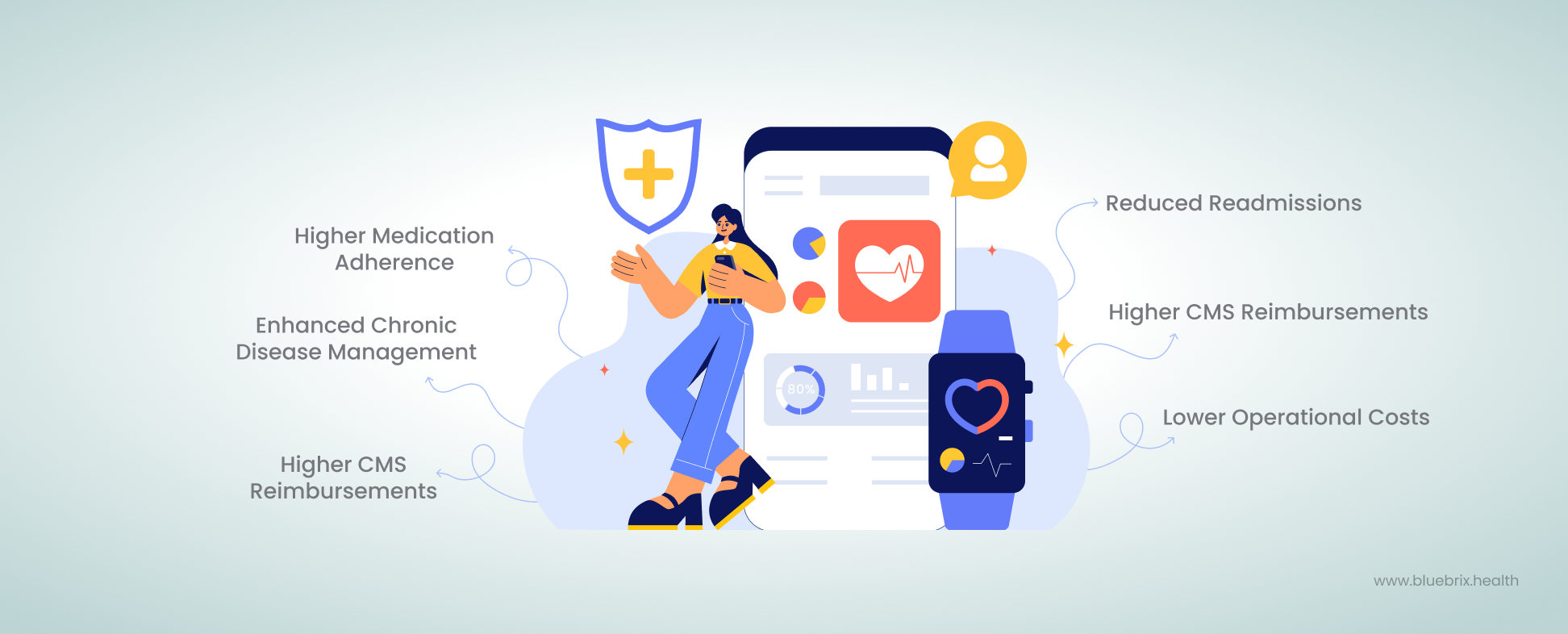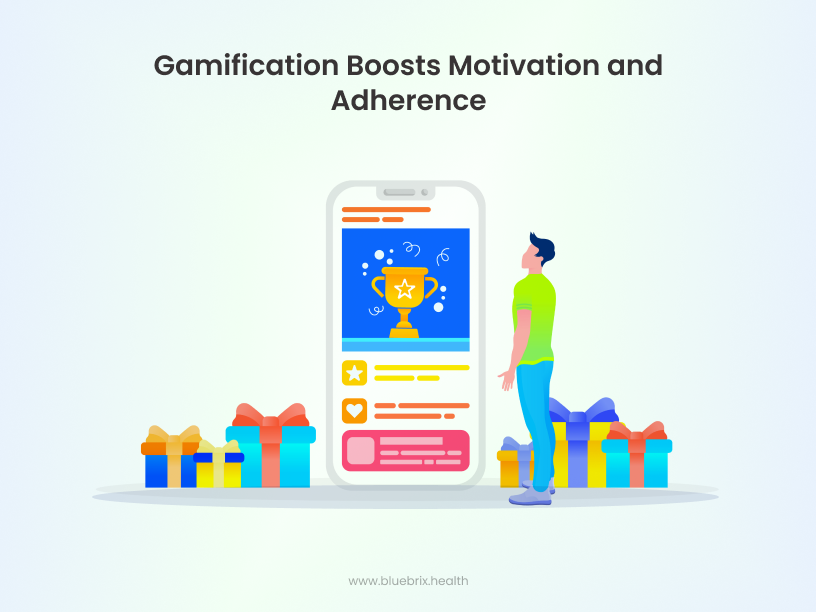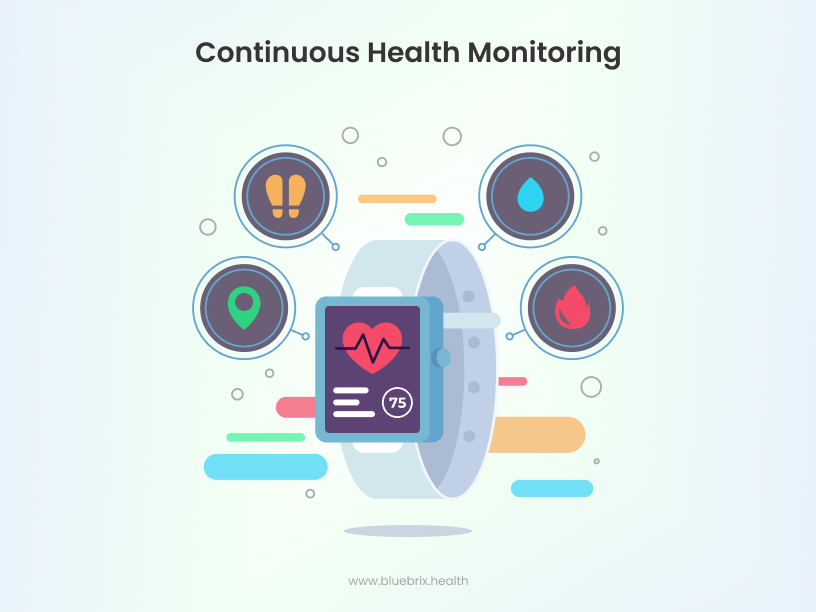
Why Patient Engagement Matters More Than Ever
In modern healthcare, patient engagement isn’t just a buzzword—it’s a critical driver of both health outcomes and financial performance. With the healthcare industry shifting toward Value-Based Care (VBC), providers are under increasing pressure to not only treat illnesses but also prevent them. And guess what? Patient engagement is the secret sauce to making that happen.
- Engaged patients are more likely to adhere to treatments, actively participate in their health management, and achieve better outcomes.
- For providers, stronger engagement translates into higher Patient Satisfaction Scores, reduced readmissions, and enhanced reimbursement rates.
But here’s the catch: Traditional patient engagement strategies—think patient portals and clunky apps—often miss the mark. Why? Because they place too much responsibility on the patient.
This is where high-impact patient engagement comes into play—personalized, proactive, and tech-driven strategies that create meaningful, continuous interactions with patients.
What Is High-Impact Patient Engagement?
High-impact patient engagement goes beyond one-off communication or generic reminders. It’s an ongoing, dynamic interaction powered by:
- Personalization: Custom-tailored experiences based on patient data.
- Proactivity: Anticipating needs rather than reacting to issues.
- Meaningfulness: Delivering value-driven, relevant content and support.
- Continuity: Maintaining consistent touchpoints throughout the care journey.
- Prevention: Using data insights to prevent adverse events and promote wellness.
The result?
- Improved health literacy and self-management.
- Better clinical outcomes.
- Increased loyalty and satisfaction.
Key Technologies Powering High-Impact Patient Engagement
To drive meaningful patient engagement in 2025 and beyond, healthcare organizations need a combination of advanced technology, tailored strategies, and seamless interoperability. Here’s a breakdown of the key enablers of high-impact engagement:
1. AI Agents for Proactive and Personalized Care
AI-powered virtual agents and chatbots are transforming patient engagement. By delivering round-the-clock support, answering queries, and providing personalized health tips, these agents reduce the workload on care teams and keep patients informed and engaged. AI also enables predictive analytics to identify at-risk patients and intervene early, preventing complications.
2. Cohort-Specific Engagement Strategies
One-size-fits-all engagement doesn’t work. Successful providers are now creating patient cohort-specific strategies based on demographics, conditions, and behavioral patterns. By segmenting patient populations, organizations can deliver relevant, timely interventions that resonate with each group.
3. Adaptable, Integration-Agnostic EHRs
Modern patient engagement demands flexible, integration-agnostic EHRs that empower providers to connect with wearables, medical devices and disparate digital health solutions. By seamlessly exchanging data with telehealth platforms, patient portals, and remote monitoring tools, these adaptable EHRs enhance care coordination and reduce administrative barriers. The result? Providers gain a holistic view of patient health, while patients experience more consistent and streamlined care, regardless of the technology being used.
4. Actionable Dashboards and Real-Time Insights
Data is only useful when it drives action. Advanced patient engagement platforms now offer actionable dashboards with real-time insights into patient behavior, medication adherence, and health outcomes. Providers can use this data to make informed decisions, track engagement effectiveness, and refine their strategies on the fly.
5. Intuitive UX for Frictionless Interaction
User experience (UX) plays a pivotal role in patient engagement. Platforms with intuitive, easy-to-navigate interfaces reduce friction, making it simpler for patients to access information, book appointments, and interact with their care teams. The easier the experience, the more likely patients are to stay engaged.
6. Gamification: Driving Engagement Through Fun and Rewards

Adding game-like elements such as points, badges, and rewards into healthcare apps is changing the way patients interact and involve in their own care positively. This approach boosts motivation and adherence, particularly for chronic disease management and wellness programs. For example, apps that reward users for meeting exercise goals or medication adherence significantly improve long-term engagement.
7. Personalization Algorithms for Tailored Experiences
Sophisticated personalization algorithms analyze patient data to deliver customized health content, reminders, and recommendations. This creates a more relevant and meaningful experience, increasing the likelihood of sustained patient participation.
8. Augmented & Virtual Reality (AR/VR) for Immersive Education and Therapy
AR and VR are enhancing patient engagement through immersive health education, pain management, and physical therapy experiences. VR simulations help patients understand complex procedures, while AR apps support physical rehabilitation by offering interactive, real-time guidance.
9. Behavioral Nudges to Reinforce Positive Actions
Behavioral science is now embedded into patient engagement platforms through digital nudges. These are subtle prompts—like medication reminders or healthy habit suggestions—that encourage patients to make better health decisions. Nudges improve adherence rates and preventive care participation, boosting overall health outcomes.
The Benefits of High-Impact Patient Engagement
Investing in high-impact patient engagement isn’t just a trend—it’s a strategic advantage. Here’s why:
1. Improved Clinical Outcomes
- Higher medication adherence: Patients are 2.5x more likely to adhere to their treatment plans.
- Reduced readmissions: Proactive engagement helps identify risks early.
- Enhanced chronic disease management: Better self-management reduces complications.
2. Enhanced Patient Satisfaction
- Customized experiences: Patients feel valued when interactions are tailored.
- Faster support: AI-driven responses reduce wait times.
- Empowered patients: Interactive tools foster self-efficacy.
3. Financial Gains for Providers
- Higher CMS reimbursements: Patient Satisfaction Scores directly impact VBC incentives.
- Lower operational costs: AI and self-service reduce administrative workload.
- Better population health management: Preventive care reduces costly complications.
Actionable Tips to Implement High-Impact Engagement
Ready to supercharge your patient engagement? Here’s how:
- Leverage AI and Automation: Use AI to personalize communication and automate repetitive tasks.
- Use Data-Driven Insights: Identify patient preferences and tailor outreach.
- Implement Gamification: Add reward systems to boost participation.
- Adopt AR/VR: Use immersive tech for education and therapy.
- Continuously Optimize: Use feedback loops to refine strategies.
The Future of Patient Engagement: What’s Next?
By 2025 and beyond, expect to see:
- Predictive Analytics for Hyper-Personalized Care: Providers will leverage predictive models to anticipate individual patient needs with greater accuracy. AI-driven insights will enable early intervention strategies, helping providers proactively address potential complications before they escalate.
- Voice-Activated Engagement Using Smart Devices: Smart home devices like Alexa, Google Home, and Siri will become healthcare companions, allowing patients to access medication reminders, schedule appointments, and receive personalized health tips through voice commands. This will simplify self-care management, particularly for seniors and individuals with disabilities.
- Wearable Integration for Real-Time Health Tracking: The next wave of patient engagement will involve seamless integration with wearables like smartwatches and fitness trackers. These devices will provide continuous health data on metrics like heart rate, sleep patterns, and activity levels, enabling care teams to offer more responsive and preventive care.

- Blockchain-Powered Privacy in Patient Data Management: With growing concerns over data privacy, blockchain technology will ensure secure, immutable, and transparent health records. Patients will have more control over their data, allowing them to grant or revoke access to providers as needed, enhancing trust and data security.
- AI-Powered Virtual Health Coaches: Expect to see more AI-driven health companions that offer real-time coaching and personalized recommendations. These virtual assistants will provide ongoing support, nudging patients toward healthier behaviors and helping them stay on track with their care plans.
- Augmented and Virtual Reality for Remote Care: AR and VR will transform telehealth experiences by enabling virtual consultations, remote physical therapy sessions, and even immersive mental health interventions. This will expand access to care and improve patient satisfaction by making remote healthcare feel more engaging and interactive.
- Integrated Patient Portals with Real-Time Insights: Future patient portals will become intuitive, all-in-one platforms offering real-time insights, treatment progress tracking, and direct communication with providers. Enhanced UX and real-time feedback loops will make patient portals indispensable tools for engagement.
Key Takeaways
High-impact patient engagement is no longer a nice-to-have—it’s a necessity for success in value-based care. By leveraging AI agents, cohort-specific strategies, adaptable EHRs, actionable dashboards, intuitive UX, and emerging technologies like gamification, AR/VR, and behavioral nudges, healthcare providers can create truly personalized, effective, and scalable engagement strategies that drive better patient outcomes and financial performance.
Pro tip: Start small—pilot one or two new engagement strategies and scale based on patient response.
Need help designing a high-impact patient engagement strategy? Let’s talk!